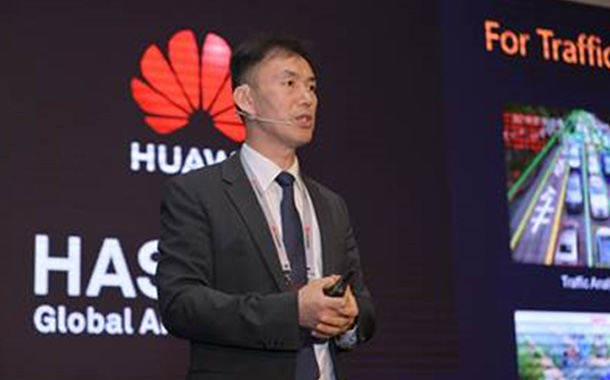‘One Cloud, One Lake, One Platform’ Architecture: Intelligent IT Inspires Digital Future
Joy Huang, Vice President of Huawei’s IT Product Line, delivered a speech at HAS2018
At the 15th Huawei Global Analyst Summit (HAS2018), Huawei IT Product Line explores the business and technology values of IT infrastructure during digital transformation with the concept of “Intelligent IT Inspires Digital Future”. Huawei utilizes the ‘One Cloud, One Lake, One Platform’ architecture to help customers innovate services and create business value based on application scenarios of customers in the government and public utilities, carrier, finance, transportation, and manufacturing fields.
“Inspired by new IT technologies including cloud, Big Data, and AI, IT infrastructure is not only a pillar of business, but also a driving force for creating business value,” said Hou Jinlong, President of Huawei’s IT Product Line. “The focus of enterprises has been shifting from effective utilization of resources to sustainable business development, and from cost effectiveness to value creation. We are dedicated to tailoring innovative IT solutions to meet industry-specific requirements, to help enterprises solve problems and generate business value.”
The ‘One Cloud, One Lake, One Platform’ architecture based on Huawei IT infrastructure aims to help customers accelerate information system integration and sharing. One Cloud refers to a converged cloud infrastructure. The converged infrastructure features unified delivery, management, and service provisioning. One Lake refers to a data lake. By aggregating data from all parties, a lake provides full-lifecycle data processing capabilities, including data collection, storage, computing, management, and utilization. The data lake allows enterprises to transform their data resources into data assets. One Platform is an application enablement platform that integrates basic data services, general-purpose middleware, and industry-specific middleware to enable customers and ISVs to achieve service innovation.
Huawei has helped to implement digital change in a number of industries. In the carrier industry, Telecom Italia replaced legacy storage systems with Huawei all-flash arrays. Delivering the same capacity, the number of required cabinets was reduced from 55 to 9, the electricity fee was cut by 82%, the space usage was reduced by 82%, and the number of maintenance personnel was reduced by 50%. The storage performance was also improved by 55%, and the overall OPEX reduced by 73%.
Meanwhile in the financial industry, China Everbright Bank chose Huawei’s hyper-converged infrastructure to implement digital transformation in its 38 branches. The implementation took two days to put in a branch on average. The number of servers and cabinets required was reduced by 86% and the number of maintenance engineers decreased by 45%.
Finally, in the government and public utilities sector, Huawei helped the Zhejiang Jiaxing government build a government data lake, which not only simplified government work but also facilitated citizens’ daily activities. For example, registering a new company used to take two months, and people used to visit six government departments for primary school enrollment. Things are different now. The registration process takes only five days, and the enrollment can be completed through an online application.
Huawei IT Product Line is committed to accelerating digital and intelligent transformation for enterprises by using chips, architecture, and AI technologies. Huawei has also been working in the cloud computing, Big Data, computing, and storage domains for many years. According to reports from IDC and Gartner, Huawei’s Big Data and e-Government Cloud solutions are in the leader’s position in China, and Huawei’s storage has been reaffirmed as a world leader. Huawei’s hyper-convergence infrastructure have also been seen as a challenger.
In addition to accumulating practical experience, Huawei has set up R&D innovation centers around the globe for IT innovation. Huawei integrates intelligent technologies into IT infrastructure and uses cloud services based on software and hardware integration to deliver superior performance and build an intelligent cloud platform. Huawei also builds data lakes to mine, aggregate, and analyze various types of data, which lays a solid foundation for Intelligent Big Data solutions. In addition, Huawei leverages intelligent computing chips and all-flash technologies to implement intelligent computing and storage.


